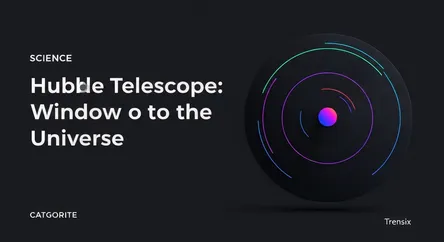Science
Hubble Telescope: Window to the Universe

Discover the Hubble Space Telescope, a revolutionary observatory that has transformed our understanding of the cosmos for over three decades of service.
What is it?
The Hubble Space Telescope is a large, space-based observatory launched into low Earth orbit in 1990. A joint project between NASA and the European Space Agency (ESA), Hubble's position above the distortion of Earth's atmosphere gives it an unobstructed view of the universe. It observes in ultraviolet, visible, and near-infrared light, capturing incredibly high-resolution images. For over three decades, it has been one of the most vital scientific instruments, providing a deep look into space and time that is impossible to achieve from the ground, contributing to countless astronomical breakthroughs.
Why is it trending?
Hubble remains a topic of public fascination due to its constant stream of breathtaking images and groundbreaking discoveries. Despite the launch of its successor, the James Webb Space Telescope, Hubble continues to operate and provide valuable scientific data. It frequently trends when it captures new cosmic phenomena, celebrates an operational anniversary, or when its legacy is discussed alongside new missions. Its longevity and resilience have made it an icon of space exploration, and its stunning images are regularly shared across social media, keeping it in the cultural and scientific spotlight.
How does it affect people?
Hubble's impact extends far beyond the scientific community. Its iconic images, like the "Pillars of Creation," have become part of our collective culture, inspiring art, education, and a sense of wonder. It has fundamentally reshaped humanity's understanding of the cosmos by helping to determine the universe's age, confirming the existence of supermassive black holes, and characterizing exoplanet atmospheres. By bringing the vastness of space directly to the public, Hubble fosters interest in science and exploration, profoundly influencing our cosmic perspective and our place within it.